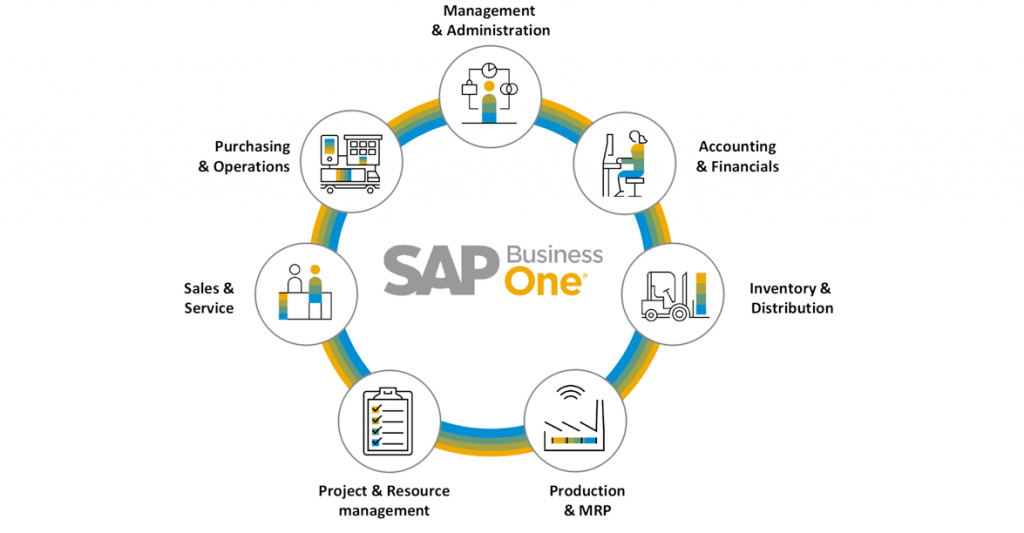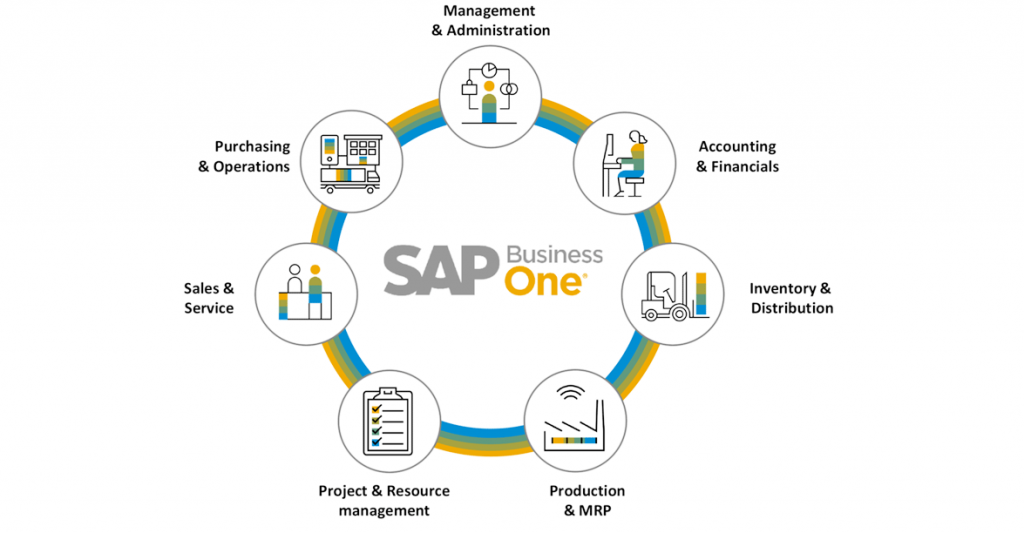SAP Business One and CRM Integration: Improving Efficiency and Customer Relationship Management
In today’s business world, managing customer relationships is crucial to the success of any company. The ability to track interactions with customers, manage sales processes, and keep track of customer data is essential. To help companies improve their customer relationship management (CRM) and streamline business operations, many businesses have turned to SAP Business One.
SAP Business One is an enterprise resource planning (ERP) software designed for small and medium-sized businesses. It provides businesses with the tools they need to manage their operations, including financial management, inventory management, and sales and purchasing management. By integrating SAP Business One with a CRM system, businesses can further improve their CRM capabilities and increase their efficiency.
What is CRM Integration?

CRM integration refers to the process of connecting a CRM system with other business software to create a seamless flow of information between different systems. For example, integrating a CRM system with an ERP system like SAP Business One allows businesses to automatically transfer data between the two systems, eliminating the need for manual data entry and reducing the risk of errors.
Benefits of SAP Business One and CRM Integration
Streamlined Data Management
Integrating SAP Business One with a CRM system provides businesses with a centralized location for storing customer data. This eliminates the need for manual data entry and the risk of errors that come with it. With all customer data in one place, businesses can easily access customer information, track customer interactions, and manage customer relationships.
Improved Sales Management
CRM integration allows businesses to streamline their sales processes. Sales data can be automatically transferred from the CRM system to SAP Business One, providing businesses with real-time information about sales activities. This enables businesses to track their sales pipeline, identify sales trends, and make informed decisions about their sales strategies.
Enhanced Customer Relationship Management
By integrating SAP Business One with a CRM system, businesses can improve their customer relationship management capabilities. With access to real-time customer data, businesses can better understand their customers’ needs, preferences, and behaviors. This enables businesses to provide personalized service and tailored marketing campaigns, ultimately improving customer satisfaction and loyalty.
Increased Efficiency
Integrating SAP Business One with a CRM system can help businesses increase their efficiency. By eliminating the need for manual data entry and automating data transfer between systems, businesses can reduce the risk of errors and free up time for employees to focus on other tasks. This can help businesses operate more efficiently and effectively.
Greater Visibility
Integrating SAP Business One with a CRM system provides businesses with greater visibility into their operations. With real-time data available from both systems, businesses can track sales activities, inventory levels, and financial performance. This enables businesses to make informed decisions about their operations and identify areas for improvement.
How to Integrate SAP Business One with a CRM System
Integrating SAP Business One with a CRM system requires careful planning and implementation. The following steps can help businesses successfully integrate the two systems:
Determine the Integration Requirements
Before integrating SAP Business One with a CRM system, businesses should determine their integration requirements. This includes identifying the data that needs to be transferred between systems, the frequency of data transfer, and any customization requirements.
Select the Integration Method
There are several integration methods available for integrating SAP Business One with a CRM system, including:
Batch Integration: Data is transferred between systems in batches at set intervals.
Real-Time Integration: Data is transferred between systems in real-time as it is created or updated.
Middleware Integration: A middleware solution is used to connect SAP Business One and the CRM system.
Customize the Integration
Once the integration method has been selected, businesses should customize the integration to meet their specific requirements. This may include mapping data fields between systems, configuring data transfer rules, and setting up data validation and error handling.
Test the Integration
Before deploying the integration, businesses should thoroughly test it to ensure that it is working as intended. This includes testing data transfer, data validation, error handling, and performance.
Deploy the Integration
Once the integration has been tested and approved, it can be deployed. Businesses should carefully monitor the integration after deployment to ensure that it continues to function as expected.
Best Practices for SAP Business One and CRM Integration
To ensure a successful integration of SAP Business One and a CRM system, businesses should follow these best practices:
Plan and Document the Integration
A well-planned integration is more likely to be successful than one that is hastily put together. Businesses should carefully document the integration requirements, methods, and customization to ensure that everyone involved in the project is on the same page.
Select the Right Integration Method
The integration method selected should be based on the business’s specific requirements. For example, batch integration may be sufficient for businesses with low transaction volumes, while real-time integration may be necessary for businesses with high transaction volumes.
Test the Integration Thoroughly
Thorough testing is essential to ensure that the integration works as intended. Businesses should test the integration in a test environment before deploying it to production.
Monitor the Integration
After the integration has been deployed, businesses should carefully monitor it to ensure that it continues to function as expected. This includes monitoring data transfer, error handling, and performance.
Train Employees
Employees who will be using the integrated system should be trained on how to use it. This includes training on how to access customer data, track customer interactions, and manage sales activities.
Conclusion
Integrating SAP Business One with a CRM system can help businesses improve their customer relationship management and streamline their operations. By providing businesses with a centralized location for storing customer data, automating data transfer, and improving visibility into operations, SAP Business One and CRM integration can help businesses operate more efficiently and effectively. However, successful integration requires careful planning, customization, testing, and monitoring. By following best practices for SAP Business One and CRM integration, businesses can maximize the benefits of these powerful systems.




